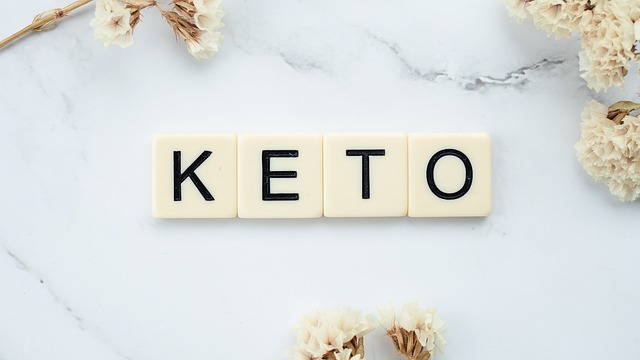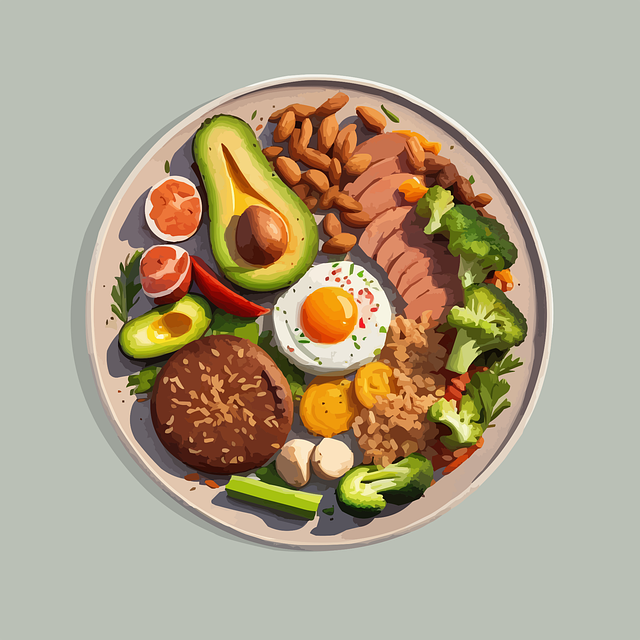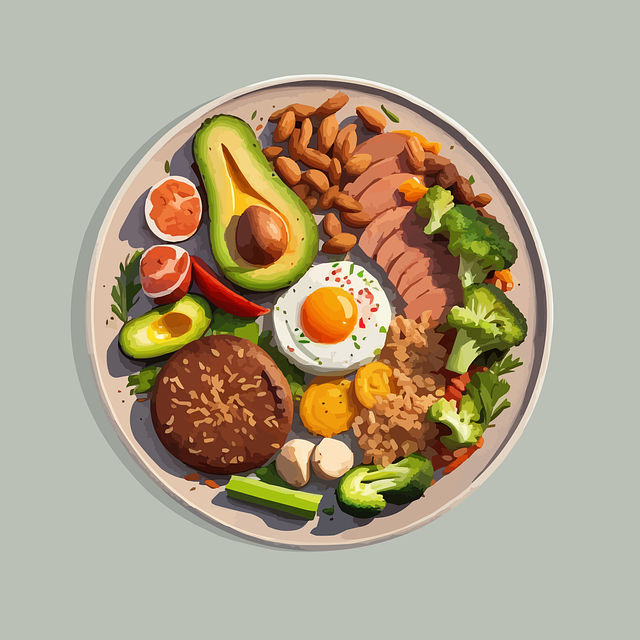Have you ever wondered what exactly the keto macros are and how they can help you achieve your weight loss goals? Well, you’re in luck because today we are going to dive into the world of keto macros and explore how they can be a game-changer for your health and wellness journey.
When it comes to the keto diet, understanding macros is essential. Macros, short for macronutrients, are the three main nutrients that make up our diets: carbohydrates, proteins, and fats. The keto diet focuses on drastically reducing your carbohydrate intake and increasing your fat intake to put your body into a state of ketosis, where it burns fat for fuel instead of carbohydrates. This shift in your macros can lead to rapid weight loss and improved overall health.
In this article, we’ll break down the optimal ratios of keto macros and explain why each one is important for your body. We’ll also explore how to calculate your ideal macro intake based on your unique goals and body composition. So, if you’re ready to take your weight loss journey to the next level and discover how decoding the keto macros can help you achieve a balanced and sustainable approach to weight loss, keep reading! You won’t want to miss this valuable information.

Understanding the Keto Macros
The Basics of the Keto Diet
The Keto diet, short for ketogenic diet, is a low-carb, high-fat diet that has gained popularity for its potential weight loss benefits and ability to improve overall health. The primary goal of the Keto diet is to induce a metabolic state called ketosis, where the body begins to burn fat for fuel instead of carbohydrates. This is achieved by drastically reducing carbohydrate intake and increasing fat consumption.
What are Macros?
Macros, short for macronutrients, are the three essential nutrients that provide energy to the body: carbohydrates, fats, and proteins. These macros play a crucial role in the Keto diet as they determine the ratios and amounts of each nutrient that should be consumed to maintain a state of ketosis.
Why Macros are Important in the Keto Diet
Tracking and understanding your macros is essential in the Keto diet because it helps ensure that your body enters and stays in ketosis, the key to experiencing the benefits of this diet. By carefully monitoring and adjusting your macro ratios, you can optimize your fat-burning potential and achieve your weight loss goals.
Calculating your Keto Macros
Determining Your Daily Caloric Needs
Before calculating your specific macro ratios, it is important to determine your daily caloric needs. This can be done by considering factors such as your age, gender, weight, height, and activity level. Several online calculators are available to help you determine your daily caloric needs accurately.
Setting Your Macro Ratios
Once you know your daily caloric needs, you can set your macro ratios. In the Keto diet, the standard ratio is typically 75% fat, 20% protein, and 5% carbohydrates. However, these ratios can be adjusted to fit your individual needs and preferences.
Adjusting Macros for Weight Loss
If your goal is weight loss, you may need to adjust your macros to create a calorie deficit. This can be achieved by decreasing your fat intake while increasing your protein intake. It is important to note that the reduction in fat should not be excessive, as fat is the primary source of energy in the Keto diet.

Fats: The Primary Macro in the Keto Diet
Healthy Fats for the Keto Diet
In the Keto diet, healthy fats are the cornerstone of your daily nutrition. These include sources such as avocados, nuts, seeds, olive oil, coconut oil, and fatty fish. These fats provide essential nutrients and help keep you satiated while supporting your body’s transition into ketosis.
How Much Fat to Consume
It is important to consume enough fat to meet your body’s energy needs while maintaining a state of ketosis. In the Keto diet, fat should generally account for 75% of your total caloric intake. This can be achieved by incorporating healthy fats into every meal and snack.
Avoiding Unhealthy Fats
While fats are a crucial part of the Keto diet, it is important to avoid unhealthy fats that can negatively impact your health. These include processed oils, trans fats, and foods high in saturated fats. Opt for sources of healthy fats instead to ensure you are getting the most benefit from your dietary choices.
Protein: The Essential Building Block
The Role of Protein in the Keto Diet
Protein is an essential macro in the Keto diet as it supports muscle growth, repair, and maintenance. It is important to consume adequate protein to preserve lean muscle mass while following a low-carb, high-fat diet.
Determining Your Protein Needs
The ideal protein intake in the Keto diet varies based on factors such as your activity level and individual goals. Generally, protein intake should account for around 20% of your daily caloric intake. This can be calculated by multiplying your daily caloric needs by 0.2 and dividing the result by 4 (as there are 4 calories per gram of protein).
Choosing High-Quality Protein Sources
When selecting protein sources for the Keto diet, opt for high-quality and low-carbohydrate options. These include lean meats, poultry, fish, eggs, and plant-based protein sources such as tofu and tempeh. Avoid processed meats and sources high in added sugars or carbohydrates to maintain ketosis.

Carbohydrates: The Limited Macro
Carb Restriction in the Keto Diet
Carb restriction is a fundamental aspect of the Keto diet as it triggers the body to enter a state of ketosis. Most individuals following the diet aim to consume less than 50 grams of carbohydrates per day. This restriction forces the body to utilize fat as its primary fuel source instead of relying on glucose from carbohydrates.
Finding Carb sources in the Keto Diet
While carbohydrates are restricted in the Keto diet, it is still important to consume nutrient-dense sources of carbohydrates. These include non-starchy vegetables like leafy greens, broccoli, cauliflower, and asparagus. These vegetables provide essential vitamins, minerals, and fiber without significantly impacting blood sugar levels.
How to Avoid Hidden Carbs
Hidden carbs can be a challenge when following the Keto diet. It is important to read labels carefully and be mindful of hidden carbohydrates in processed foods. Common culprits include sauces, condiments, and certain vegetables. By staying vigilant and being aware of potential hidden carbs, you can maintain ketosis more effectively.
Micronutrients: The Vital Nutritional Elements
Recommended Micronutrients in the Keto Diet
While macronutrients are crucial in the Keto diet, it is equally important to prioritize micronutrients. These include vitamins, minerals, and other essential nutrients that support overall health and wellbeing. Consuming a variety of nutrient-dense foods is essential to ensure you are meeting your nutritional needs.
Ensuring Sufficient Vitamin and Mineral Intake
To ensure you are getting sufficient vitamins and minerals on the Keto diet, focus on consuming a wide range of colorful vegetables and low-sugar fruits. Additionally, consider incorporating quality supplements, such as a multivitamin and mineral complex, to cover any potential nutrient gaps.
Addressing Potential Micronutrient Deficiencies
While the Keto diet can provide numerous health benefits, it may also lead to potential micronutrient deficiencies if not properly balanced. Paying attention to your food choices and including a variety of nutrient-dense foods can help minimize the risk of deficiencies and support optimal health.
Meal Planning and Tracking Macros
Creating Balanced Keto Meal Plans
Meal planning is an essential component of successful Keto dieting. By creating balanced meal plans that adhere to your macro ratios, you can ensure you are meeting your nutritional needs while enjoying a variety of flavorful and satisfying meals. Consider incorporating a mix of healthy fats, quality proteins, and low-carb vegetables into each meal.
Using Apps and Tools to Track Macros
Tracking your macros can be made easier with the help of various smartphone apps and online tools. These tools allow you to input your meals and snacks, automatically calculating your macronutrient ratios. By consistently tracking your macros, you can stay on track and make adjustments as needed.
Adjusting Macros for Different Meals
Eating a keto-friendly breakfast, lunch, and dinner is relatively straightforward, but it can become more challenging when it comes to snacks and desserts. It is important to make adjustments to your macros accordingly, ensuring you are staying within your daily limits while still enjoying the occasional treat.
Eating Out and Social Situations
Navigating Restaurants and Fast Food on Keto
Eating out while following the Keto diet can be challenging, but it is not impossible. Many restaurants offer keto-friendly options, such as grilled meats, salads, and non-starchy vegetables. Additionally, you can inquire about substitutions and request modifications to adapt meals to fit your macros.
Making Smart Choices in Social Gatherings
Social gatherings can present temptations and challenges when sticking to the Keto diet. However, with a little preparation and mindful choices, you can navigate these situations successfully. Stick to low-carb options, drink plenty of water, and be mindful of portion sizes to ensure you stay in ketosis.
Dealing with Peer Pressure and Criticism
When following a specific diet, it is common to encounter peer pressure and criticism from others who may not understand or support your choices. Remember that your health and wellbeing are the driving forces behind your decision to follow the Keto diet. Stay aligned with your goals and surround yourself with supportive individuals.
Monitoring and Adjusting Macros
Regular Monitoring of Your Macros
Monitoring your macros regularly is essential to ensure you are staying on track and achieving your desired results on the Keto diet. Keeping a food diary or using a tracking app can help you see where adjustments may need to be made and identify patterns that contribute to your progress.
Recognizing Signs of Imbalance
Signs of macro imbalance on the Keto diet may include stalled weight loss, decreased energy levels, or a decline in overall well-being. Pay attention to these signs, as they may indicate that your macro ratios need to be adjusted to better suit your body’s needs.
Adjusting Macros Based on Individual Needs
Every individual is unique, and what works for one person may not work for another. Adjusting your macros based on your individual needs, preferences, and goals is crucial to ensure that you are getting the most out of your Keto experience. Experimentation and listening to your body will help you find the perfect macro ratios for your success.
Conclusion
The Keto diet offers a balanced approach to weight loss and overall health when properly understood and practiced. By decoding the Keto macros and customizing your macro ratios, you can optimize the benefits of the diet while ensuring you meet your nutritional needs. Remember that sustainable and healthy weight loss is a journey, and finding the right balance that works for you is the key to long-term success with the Keto diet.


